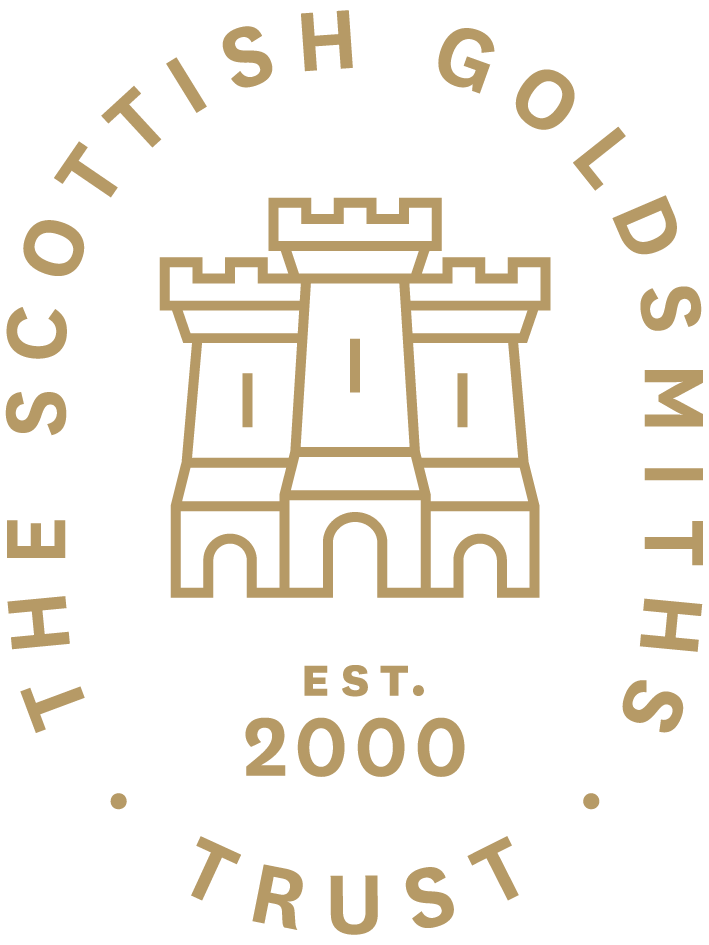Spotlight On: Monica Findlay
Spotlight On: Monica Findlay
Monica Findlay’s work combines precious and non-precious metals emphasise habitual traces that are often overlooked, extending curiosity from maker to viewer. Her graduate showcase brought together storytelling and archaeology, exploring tangible remains, with their surface qualities as important signifiers or touchstones of memories both ancient and modern. Since graduating from The Glasgow School of Art, Monica has been an Artist in Residence at The Glasgow School of Art while continuing to design and make her own collection, set to launch this summer.
Monica’s work was featured in our 2021 Graduate Showcase at Elements. We caught up with Monica to learn more about how her work and career have developed in the last year.
Graduate Collection by Monica Findlay
How did you become interested in jewellery?
For me, metal work felt like the natural choice when I considered my interest in materiality and the sentimental nature of objects. Silverware can transform moments into treasured objects, and I’m interested in the idea of preserving a narrative through my practice. I also love to work in a handheld scale. Something about it feels personal; you form an intimate attachment to something you can hold, which only then increases through wear.
Why did you decided to follow this career path?
It was essential to choose something creative that allowed me to spend plenty of time working with my hands, as this is where I've always found my focus. I settled on this specialism upon visiting The Glasgow School of Art. I was captivated by the work that unfolds within the jewellery studios; it felt like stepping back in time (though the outcomes are far from traditional). As someone who loves a bit of problem-solving, I find the technical elements of this trade so enjoyable; every piece is both challenging and gratifying. Many of the techniques learnt within this course have been around for hundreds of years, and I find something beautiful about expressing my creativity through an ancient set of skills; in a way, I feel part of their maintenance. I am delighted to work in a community of makers constantly pushing this ancient craft's potential.
Can you tell us what you are doing in your career right now and what you are currently working on?
This year I have been working on a commercial line to support the making of my larger pieces. These staples, alongside my new branding, will be officially launched on a website this summer! I have also been undergoing a Residency at the Glasgow School of Art, where I deliver teaching assistance while expanding my own collection. This has been a valuable catalyst for my career, and it has been so lovely to be back in the collaborative environment of an Art School.
Most recently, I have been developing a collection of brooches that play on elements from my degree show collection. I made these wearables ahead of the recent exhibition: Return, Remake, React, a group exhibition in Glasgow where The Alchemy Experiment displayed my new work alongside that of my Glasgow School of Art cohort.
Where do you draw your inspiration from in your work?
I draw references from many places, some with more personal significance than others. Overall, I focus on objects that seem to carry traces of the past, things that have a physical presence that goes beyond our living memory. I often use Scottish archaeology as a context to explore these ideas; I feel it provides me with imagery that others can relate to, allowing me to play with nostalgic associations. I identify qualities in artefacts that capture my interest and explore these elements through metal to extend my curiosity to the viewer. My goal is often to create somewhat ambiguous objects that feel distant yet familiar.
How would you describe your design style?
I would consider my style to lie between made and discovered; I hope my pieces capture the aura of forgotten artefacts while still being considered contemporary. Embossed traces and delicate wirework juxtapose throughout my collections to explore what lies beneath the surface. Light and tactility are significant to my style; I want my objects to draw the viewer closer and be engaging.
Tell us about your practice and methods you have developed in your work.
Being compelled to take a closer look at my domestic throughout lockdown shaped how I work tremendously, and I don't think I would have used specific processes without that experience. For example, I use metal sampling in combination with cyanotype print to create my designs. This incredibly tactile process lends well to my interest in the material past, as cyanotypes require an object's physical presence to develop: A tangible memory of an object is captured through its exposure to UV light. These distorted shadows left on the page are then transformed into my metal work through the likes of embossed and etched textures. This process forms the basis of most of my pieces, and I would like to continue to explore making this more prominent in my outcomes.
I also consider how my pieces translate back into these prints, meaning that wirework became a predominant feature; the shadows cast back onto surfaces from pieces with large areas of negative space are beautiful.
What is next for you this year?
Despite the recent increase in digital platforms, I’m really looking forward to reclaiming physical spaces. There’s been a real buzz around getting back to exhibitions and networking with other makers! I plan to continue seeking opportunities to showcase my new collection on and offline. I also want to continue refining my practice and establishing my career through developmental residencies and business-focused opportunities.







